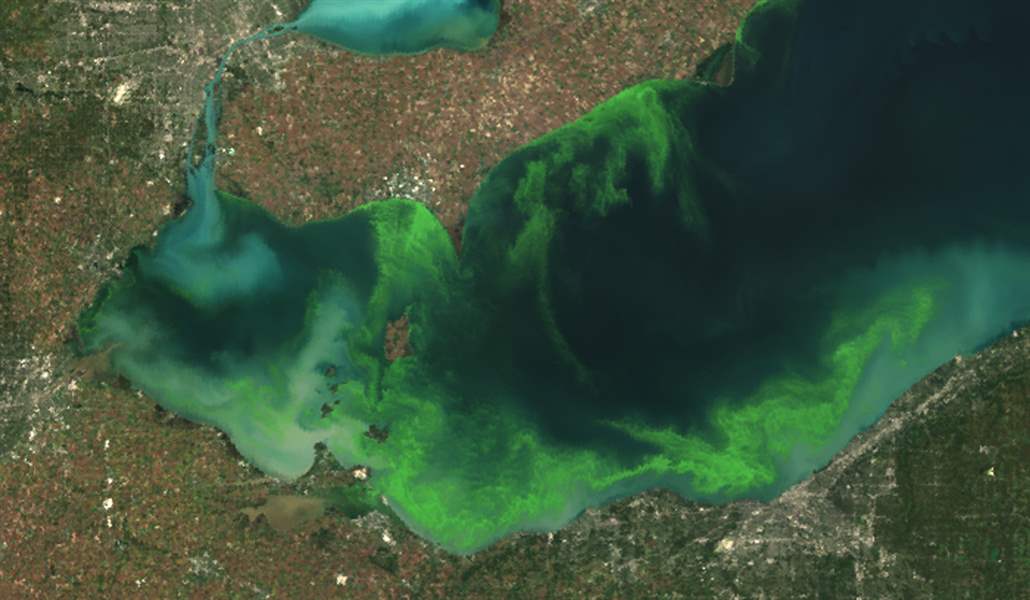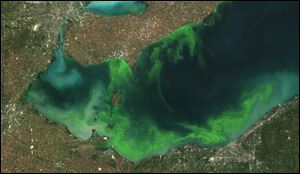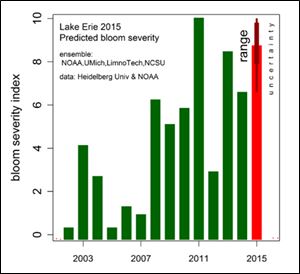
This year's algae bloom in Lake Erie could rival 2011, NOAA says
7/9/2015
This satellite image provided by NOAA shows the algae bloom on Lake Erie in 2011 which according to NOAA was the worst in decades.
ASSOCIATED PRESS

This satellite image provided by NOAA shows the algae bloom on Lake Erie in 2011 which according to NOAA was the worst in decades.
PUT-IN-BAY — The National Oceanic and Atmospheric Administration is now predicting the 2015 western Lake Erie algae bloom could rival the 2011 record because of excessive rain that began in mid-June and continues this week.
"The forecast is definitely worse than 2014," Rick Stumpf, a NOAA oceanographer and chief harmful algal bloom forecaster, told a roomful of journalists and public officials today during a long-awaited seasonal algae forecast. "Right now, we're looking at the second worst bloom after 2011."

This graphic illustrates, through the red bar, what the projected HABS bloom range for 2015 will be in comparison to the final bloom size of blooms over the previous 15 years. The wider portion of the red bar is the most likely scenario based on current nutrient loading data.
RELATED ARTICLE: Toledo says water supply is fine; no detectable levels of microcystin found
The severity is considerably worse than early predictions from May, when an average bloom was anticipated, and even worse than the latest update a couple of weeks ago.
NOAA rates this year's expected bloom as an 8.7 on a scale of 10, with 10 being the 2011 record. The 2014 bloom’s severity was rated as 6.
The forecast was released at the Ohio State University’s Aquatic Visitors Center on South Bass Island, used as a last-minute briefing site until weather cleared enough for research vessels to shuttle attendees over to Ohio State’s Stone Laboratory on Gibraltar Island.